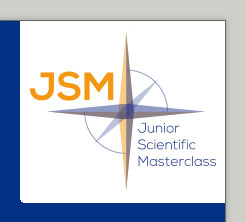Onderzoeksproject aanpassen
Projecten zijn uitsluitend aan te passen door bij het project behorende onderzoekers.
Geef via het uitrolmenu aan welke onderzoeker u bent. Nadat op u de button 'Edit project' heeft geklikt, wordt automatisch een e-mail verstuurd naar het e-mailadres van de onderzoeker die u heeft gespecificeerd.
In deze e-mail staat een link waarmee u het project kunt wijzigen.
Project properties
| Title | Echocardiographic predictors of clinical outcomes after peecutaneous aortic valve replacement |
|---|---|
| Keywords | echocardiography aortic stenosis transcatheter aortic valve implantation |
| Researchers |
dr. E. Lipsic Prof. dr. A.A. Voors J.J. Wykrzykowska |
| Nature of the research | Retrospective data collection on characteristics and clinical events and echocardiographic evaluation in >1000 patients who underwent percutaneous aortic valve replacement |
| Fields of study | cardiology |
| Research question / problem definition |
|---|
| What are the echocardiographic predictors of clinical outcome after a transcatheter aortic valve implantation? |
| Workplan |
|---|
| During the last decade, more than 1000 patients underwent a transcatheter aortic valve implantation (TAVI) in the UMCG. Data of these patients have been collected, but additional data on clinical characteristics, laboratory values and their long-term clinical outcome needs to be added for several patients. In addition, echocardiograms need to be uploaded and evaluated. The student will learn how to evaluate echocardiographic images by experienced echo technicians. Then, the student will apply statistical analyses (t-test, Chi2 regression analyses) on the data to address the primary research question. Finally, the student will write a report and potentially a scientific paper for an international journal on the outcomes of this study. |
| References |
|---|
|
1. Carabello BA, Paulus WJ, Blase P, Carabello A. Aortic stenosis. Lancet [Internet]. 2009;373:956–66. Available from: www.thelancet.com 2. Ben-Dor I, Pichard AD, Gonzalez MA, Weissman G, Li Y, Goldstein SA, et al. Correlates and causes of death in patients with severe symptomatic aortic stenosis who are not eligible to participate in a clinical trial of transcatheter aortic valve implantation. Circulation. 2010;122(11 SUPPL. 1). 3. Khosravi A, Wendler O. TAVI 2018: from guidelines to practice. E-Journal Cardiol Pract. 2018; 4. Liu Z, Kidney E, Bem D, Bramley G, Bayliss S, De Belder MA, et al. Transcatheter aortic valve implantation for aortic stenosis in high surgical risk patients: A systematic review and meta-analysis. PLoS One. 2018 May 1;13(5). 5. Leon MB, Smith CR, Mack M, Miller DC, Moses JW, Svensson LG, et al. Transcatheter aortic-valve implantation for aortic stenosis in patients who cannot undergo surgery. N Engl J Med. 2010 Oct 21;363(17):1597–607. 6. Généreux P, Webb JG, Svensson LG, Kodali SK, Satler LF, Fearon WF, et al. Vascular complications after transcatheter aortic valve replacement: Insights from the PARTNER (placement of AoRTic TraNscathetER valve) trial. J Am Coll Cardiol. 2012;60(12):1043–52. 7 Mack MJ, Leon MB, Thourani VH, Makkar R, Kodali SK, Russo M, et al. Transcatheter aortic-valve replacement with a balloon-expandable valve in low-risk patients. N Engl J Med. 2019;380(18):1695–705. 8 Makkar RR, Thourani VH, Mack MJ, Kodali SK, Kapadia S, Webb JG, et al. Five-Year Outcomes of Transcatheter or Surgical Aortic-Valve Replacement. N Engl J Med. 2020;382(9):799–809. |



